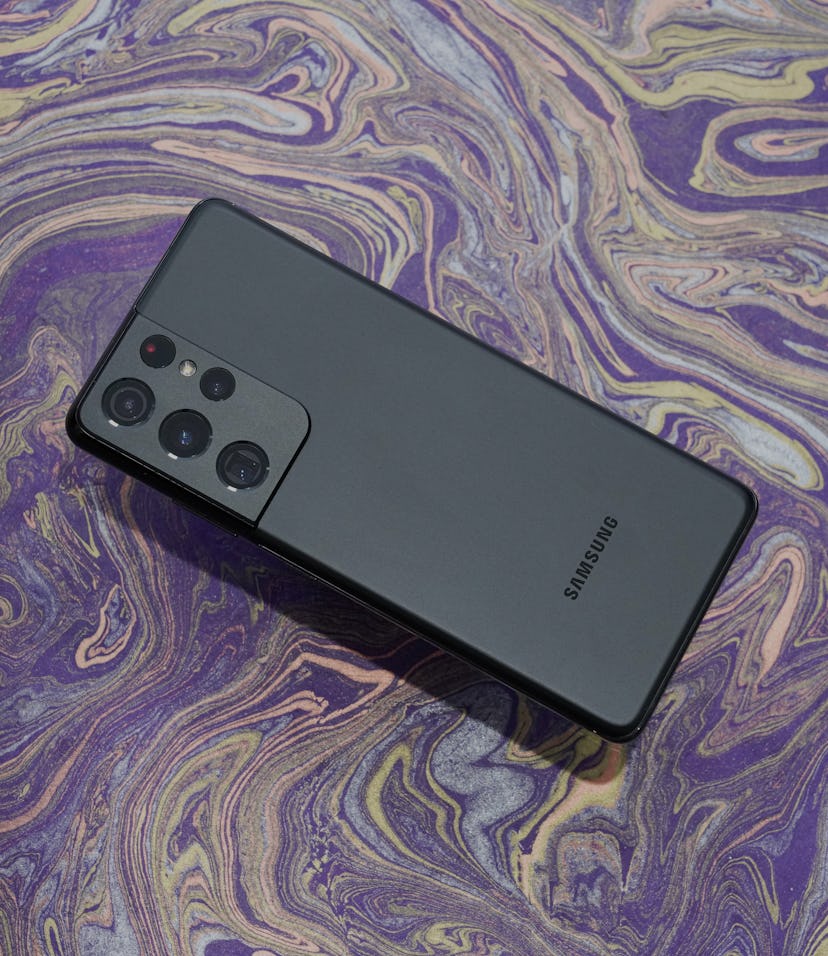tech
Ray tracing on Samsung phones? AMD is making it happen.
Samsung and AMD teaming up to make a mobile chip could mean the most powerful gaming phones ever made with graphics on par with the PlayStation 5 and Xbox Series X.

The cameras are undoubtedly the marquee feature on Samsung’s flagship phones, but everyone forgets that they’re really good gaming phones, too. With AMD’s graphics expertise, future Samsung phones could put dedicated “gaming phones” — a massively growing market, especially in Asia — to shame.
Earlier this month, at Computex 2021, AMD CEO Lisa Su dropped the bombshell news (via The Verge) that it’s partnering with Samsung to develop a new Exynos system-on-chip (SoC) that uses Radeon graphics. Samsung’s Exynos SoCs are nothing new — they power phones sold in certain regions and generally are regarded as inferior to Qualcomm chips — but this new one, co-developed with AMD, could shake things up and pave the way for future phones that absolute graphical powerhouses.
While Samsung and AMD have yet to share complete specs, Su did spill the beans on the GPU, which will use AMD’s RDNA2 Architecture. That’s the same architecture used in the PlayStation 5 and Xbox Series X GPUs as well as AMD’s own 6000-series GPUs for PCs. How mind-blowing is that?
PC specs to go — Variable-rate shading, or VRS, is a more efficient way of allocating GPU resources across a rendered image, with graphically complex parts taking up more resources. Ray tracing is the other big feature that high-end GPUs enable; it allows games to look more realistic by simulating lighting and reflections in a more lifelike way. For example, with ray tracing on, even games like Minecraft can be transformed with gorgeous graphics.
Slapping ray tracing capabilities into a mobile chip would be the kind of game-changing move that sets Samsung’s phones apart from the competition. Apart from some experimental ray tracing on a mobile processor, it hasn’t been done by any graphic titan like AMD or Nvidia. With many “hardcore” gamers looking down on mobile gaming, Samsung and AMD’s custom chip could be a huge feather in mobile games’ cap.
There is an immense level of excitement over the partnership and what it could potentially yield.
I admit, it’s strange that AMD is partnering with Samsung, especially since the Korean electronics giant isn’t some bastion of mobile gaming, but there is an immense level of excitement over the partnership and what it could potentially yield. That said, teaming up with AMD makes sense, though, if you look at the investments Samsung has made in improving mobile gaming on its phones over the years. Optimizations with Qualcomm’s SoCs and features like larger vapor cooling chambers have all made Samsung phones better gaming devices; the only thing missing are gaming-specific features like air triggers or RGBs that you find on gamer phones like the Asus ROG Phone 5.
Currently, mobile gaming is not as popular in the U.S. or Europe as it is in Asia, but recent booms in game streaming services like Stadia and xCloud, and peripherals such as the Razer Kishi suggests it’s only a matter of time before the West follows suit.
Look closer — The news is definitely exciting, and I say that as someone who has always been meh on Samsung phones, but it’s too early to go all in. For one, we haven’t seen any gameplay or performance benchmarks. And, to my knowledge, there are no mobile games that currently take advantage of ray tracing, mainly because no mobile chipsets support it so it could be rough for early adopters. But as soon as the mobile chips support it, you better believe there will be a race to support ray tracing and higher graphical fidelity. At the very least, it’ll make it easier to port console and PC games over to mobile.
The main concern I have is how well ray tracing will work on mobile; the graphics feature is a power-hungry process, which would chew through just about any battery in mere hours. Either Samsung would have to increase the battery size or shrink the die fabrication size to use up less energy. Neither would be an easy task, but if anyone could do it, it’d be Samsung and AMD since they’re experts in chip production.
Despite Su confirming that the “next place you’ll find RDNA 2 will be the high-performance mobile phone market,” it’s also possible that the next-gen Exynos SoC could be used in devices like tablets and laptops. Su specifically says “we’ll bring custom graphics IP to Samsung’s next flagship mobile SoC with ray tracing and variable rate shading capabilities” (emphasis ours). In larger devices, the power concerns I have could be moot.
Another thing that worries me is that as an owner of an AMD Radeon RX 5700XT GPU, I’ve encountered a litany of issues that have caused me to reconsider my GPU alliances. At one point, my computer kept crashing even for watching YouTube; I ended up having to wipe and reinstall Windows. While I can play most games on high or ultra, there are still some games, such as Gears of War Tactics, that I’ve never been able to run for more than a few minutes no matter what I do. Another time, the GPU driver wasn’t compatible with a version of DaVinci Resolve Studio 17, a piece of software that costs $295, and I had to stop using it for several months. My card is on RDNA architecture, not RDNA2, so it could be different. All I’m saying is that AMD doesn’t have the best track record when it comes to GPU stability. While I can’t wait to see what comes out of this collaboration, it wouldn’t hurt to have some reasonable skepticism.